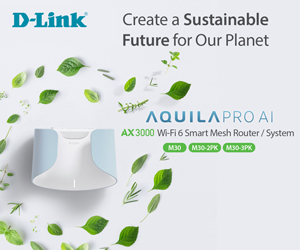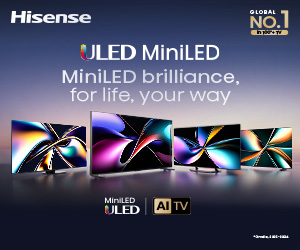The Geekom A7 Mini PC puts the power and blazing performance of an AMD Ryzen R9-7940HS and AMD Radeon 780M GPU in a minimalist Mini PC format.
The tech world knows about GEEKOM because this Taiwanese company has since 2003 been building quality mini and specialty PCs sold mainly in the USA, Europe/UK and now in Australia. There is little to go wrong, so this is a safe buy here.
I love NUC-style PCs – I have specified many as signage controllers, point-of-sale controllers, and even in motorhomes as a Windows PC with Media Centre capability. You can buy this tiny 112.4 square x 37 mm x 413g box with various processors and RAM/Storage at prices to suit your needs.
Who uses Mini PCs?
GEEKOM Mini PCs are ultra-small (like a laptop without a screen or keyboard) running full-fat Windows 11. They are low maintenance, have high durability, a higher heat tolerance (-25 to +55°/90% RH), low noise(<45dB) and are VESA mountable. They are used by:
- Law Enforcement to drive in-car screens, facilitate Internet searches, and manage comms.
- Paramedics use them to drive diagnostic equipment (they run Windows or Linux).
- Mining companies with large earth-moving equipment as process controllers and Windows PC functionality.
- Military use for rugged computing.
- Schools, universities, and TAFEs for computer labs offering more power and higher reliability than laptops.
- Boats/cruisers as media centre PCs providing internet access and local video and audio storage.
- Motor homes and caravans – these are small and almost indestructible.
- Extensively used in digital signage as they can drive multiple monitors (maximum four).
- Point-of-sale registers.
- Media Centre – Windows can play various video and audio codecs that Android/iOS DRM protection cannot (e.g. torrents). Note the AMD SoC supports HDR but not Dolby Vision metadata.
- Shared hot-desk work situations – add a monitor and keyboard/trackpad.
- Boardroom PCs.
- Industrial controllers for equipment monitoring and control.
- IoT controllers.
- Edge computing for AI clouds
Power is from a 240V/2A main to DC 19V/6.32A/120W ‘brick’. They do not support upstream charging from a dock as their power requirements exceed USB-C PD 3.0, but expect that to change in future generations with the wider adoption of PD 3.1.
Australian Review: GEEKOM A7 Mini PC
| Website | GEEKOM PC AU website Product Page |
| From | GEEKOM Amazon Store direct, including free shipping from its Australian warehouse |
| RRP (Feb 2024) | $1799 R7-7840HS/32GB/1TB on special at $1299 $1999 R9-7940HS, 32GB/2TB on special at $1499 (as tested) |
| CyberShack reader’s price to 20 March | Amazon AMZ link(AU): A$30 off code: cyberskA7 AMZ link(USA): $20 off code:cyberskA7 AMZ link(UK): £15 off code: cyberskA7 |
| Warranty | 3-years ACL and guaranteed 24-hour customer response |
| Company | Since 2003, Taiwanese GEEKOM has been a multinational consumer electronics company specialising in mini PCs. It is one of the largest manufacturers of mini PCs in the world. It now has an Australian base. |
| More | CyberShack Mini-PC reviews |
We use Fail (below expectations), Pass (meets expectations) and Exceed (surpasses expectations or is the class leader) against many of the items below. We occasionally give a Pass(able) rating that is not as good as it should be and a Pass ‘+’ rating to show it is good but does not quite make it to Exceed. You can click on most images for an enlargement.
Geekom A7 Mini PC Base Specs (as tested)
- AMD Ryzen R9-7940HS and AMD Radeon 780M GPU (option R7-7840HS – not tested)
- Up to 64GB DDR5-5600 SODIMM (32GB tested)
- Up to 2TB PCIe 4.0 x4 (Acer N5000 2TB as tested)
- Full-size SD card reader
- 2 x HDMI 2.0b TMDS (Transition Minimised Differential Signalling) is 18Gbps and supports a maximum of 4K@60Hz, SDR, 8-bit/16.7m colours. You can get higher resolutions from a USB-C 4.0 port (maximum of four external monitors).
- 1 x USB-C 4.0 (40Gbps) with Alt DP (can connect eGPU)
- 1 x USB-C 3.2 Gen 2 (10Gbps)
- 3 x USB-A 3.2 Gen 2 (10Gbps)
- 1 x USB-A 2.0
- 3.5mm 4-pole earphone/mic jack
- 2.5Gbps RJ45 Ethernet (RLT812B5-CG)
- Wi-Fi 6E AXE/Bluetooth 5.3 (MediaTek MT7922, 2402Mbps 160Hz Wireless Lan)
- DC Plug 19V/6.32A/120W (from a power ‘brick’)
- Windows 11 Pro

First Impression – smaller and svelte – Pass+
It is very well-made, more elegant than the typical grey NUC in a fashionable dusty silver, CNC metal sandblasted, anodised, aviation-grade aluminium alloy. On the front is power, 2 x USB-A 3.2 Gen 2 (10Gbps – one with Sleep charge), and the other ports are on the rear. On the left side is a full-size SD slot.
The new case (as distinct from the older NUC style) is more rugged. It passes multiple torture tests.

Processor – Pass+
Regrettably, I am not as familiar (as I should be) with AMD Ryzen CPUs except to say that the AMD Ryzen R9-7940HS is often compared to an Intel Core i7-13750H, Core i7-13650HX and Core i9-13900H (which I am familiar with). These are laptop processors with 35-45W TDP, but they still need cooling. PL1 and PL2 power limits are 45 and 60W – overclocking.
Technically, it is a 4nm, 8 core/16 threads 4-5.2GHz clock, supporting PCIe 4.0, USB 4.0 40Gbps, USB 3.2 Gen 2 (10Gbps), USB 3.0 (5Gbps). USB 2.0 (480Mbps) and DDR5-5600 (or LPDDR5x-7500) RAM.
The motherboard is a new 12-layer miniaturisation marvel (most are 6 or 8 layers) made possible by the 4nm SoC.

Video processing
The iGPU is an AMD Radeon 780M, 12-core at 2800MHz, supporting HDMI 2.0b/DP 1.2 and up to four monitors at up to 7680×4320@60Hz. It has Ray Tracing and can hardware encode H.264, H.265, and AV1 and decode that plus VP9, VC1 and MPEG2.
It supports 8K encode and decodes of 10-bit colour and native HDR but does not support Dolby Vision decoding. That affects its use as a media centre.
Sound processing – no speakers
It has an HDA 6-channel codec – no amp. It natively decodes PCM to 5.1, Dolby Digital (all variants) to 5.1, and downmixed to 2.0.
AI NPU
AMD Ryzen AI (an NPU with up to 10 TOPS) means compatible AI apps can use this instead of the GPU. The problem is that currently, there is a lack of software that can use the AI NPU (most use the GPU).
Windows does not currently support AMD with Microsoft’s DirectML API, which means no AI acceleration in Windows.
Our take – there are no must-have, killer apps. AI is not really for now. It is nice to know it can do ‘something’, but future processors will be more powerful and support more AI edge computing.
Gaming
Complete benchmarks are here.


Tests
Geekbench
This dramatically demonstrates the power levels. While best performance gives slightly higher results they are only minimally better than Balanced.
| Geekbench | Single-core | Multi-core | OpenCL | Vulkan |
| Best Power Efficiency | 1871 | 9754 | 33245 | 36633 |
| Balanced | 2652 | 13323 | 34072 | 38008 |
| Power | 2684 | 13333 | 34587 | 38345 |
PC Mark – PAss+
Best Power Efficiency

Balanced

Power

Pass Mark (Performance mode) – Pass+

Error on OpenCL
Cinebench 23 – Exceed
There is excellent performance beating the Intel i9-9800H

Disk Tests
It has an Acer N5000 2TB PCIe 4.0 x4 SSD used in some Predator Gaming laptops with a heatsink. It is a mid-range SSD quoting 5000/4400MBps sequential read/write speeds. 3D TLC.

ATTO test – Pass+
This reads and writes from 512B to 64MB files. Results are excellent.

Crystal Disk – Pass+
Windows power levels affect disk speeds. Crystal Disk is about peak throughput.
Low

Balanced

Performance

CPDT – Pass+
CPDT records sustained throughput. It is unaffected by performance settings. It shows the cache filling at about 500MB reducing the write speed. This won’t be an issue for normal use.

DaVinci Resolve – Pass+
This video editing benchmark combines CPU, GPU, memory and disk. It cewrtainly has good video editing chops.

Port power tests – Pass+
- USB-A 10Gbps/1250MBps (899)
- USB-A 480Mbps/63MBps (44)
- USB-C 3.2 Gen 2 10Gbps/1250MBps (965)
- USB-C 4.0 40Gbps/5000MBps (2200)
Wi-Fi/BT 5.3/Ethernet – Pass+
Wi-Fi 6E connects at the maximum speed of 2402/2402Mbps on the 6GHz channel of our TP-Link Deco BE85 Wi-Fi 7 BE22000 tri-band mesh router.
Bluetooth is 5.3 with the standard SBC codec.
Power/Fan tests – Pass+
- CPU temp 100% load 95°
- Idle 42-45dB
- Power mode 49dB
- Idle power <1W
- Video 1080p power 25W
- 100% load power 80-90W
Support/maintenance – Pass+
GEEKOM will have a full downloads page with the latest Windows Drivers, Windows 11 Pro ISO, and a User Guide.



CyberShack’s view – The Geekom A7 Mini PC puts the power of an AMD Ryzen R9-7940HS and AMD Radeon 780M to good use – it is fast
It is the fastest Mini PC we have tested – an order of magnitude faster than Core i9-13900H in the GEEKOM Mini IT13 PC – big power, small box.
It redefines what a Mini-PC can do with a 35W TPD processor.
- High performance: excellent for multitasking and Full HD gaming.
- Energy efficiency: low consumption and good thermal management.
- Good connectivity: extensive options, although without Thunderbolt 4.
- Compact and aesthetic: ideal for small spaces.
- Silent operation: reasonable – the fan is active but not annoying.
Geekom A7 Mini PC rating
- Features: 95 – decent expansion opportunities and everything a laptop has except a screen and keyboard. It has USB 4.0 instead of Thunderbolt 4 found on Intel devices. For the most part, it will perform similarly.
- Value: 90 – represents good value – more so if you get it on the launch special.
- Performance: 95 – excellent for a mobile processor and does not throttle as it is mains powered. Just remember that it has three performance modes.
- Ease of Use: 90 – Plug and Play. A three-year warranty is excellent.
- Design: 90 – Nice new design but missing any expandability.
Starts 16.50 m in
CyberShack Verdict
Geekom A7 Mini PC, AMD Ryzen R9-7940HS and AMD Radeon 780M
$1499 on special









Comments